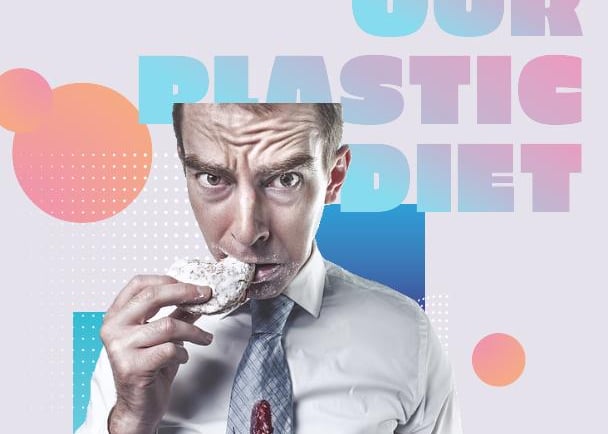Canada-wide Free shipping on orders over $35 / EUROPE / UsA / limited time free shipping on orders over $70
Our Plastic Diet
What Are Microplastics? Microplastics are tiny pieces of plastic, less than 5 millimeters in size. These minuscule particles are pervasive in our environment: - They don't disappear; they just get smaller. - They can be found at the bottom of water streams. - They float in the air that surrounds us. - Shockingly, they can even be found inside our bodies.
5/8/20242 min read


The Alarming Truth About Microplastics: We're Eating a Credit Card a Week!
What Are Microplastics?
Microplastics are tiny pieces of plastic, less than 5 millimeters in size. These minuscule particles are pervasive in our environment:
- They don't disappear; they just get smaller.
- They can be found at the bottom of water streams.
- They float in the air that surrounds us.
- Shockingly, they can even be found inside our bodies.
The Scale of the Problem
Recent studies have revealed the staggering extent of our microplastic consumption:
- According to the World Wide Fund for Nature (WWF), we consume around 100,000 microplastic particles a year.
- This amounts to approximately 5 grams of plastic every week - equivalent to eating a credit card!
- Over a month, we consume about 21 grams of plastic - the weight of a clothes hanger.
- A study published in Environmental Science and Technology suggests humans may be consuming between 39,000 to 52,000 microplastic particles annually.
- National Geographic reports we might be inhaling around 74,000 microplastic particles each year.
Visualizing the Consumption
To put these numbers into perspective:
- Every week, we consume the equivalent of one credit card or plastic pen in microplastics.
- Monthly, our plastic intake equals the weight of a full clothes hanger.
- Annually, we're ingesting and inhaling over 100,000 particles of microplastic.
The Urgent Need for Change
The reality is even more alarming than previously thought. Recent data suggests we might be consuming about one full credit card's worth of plastic every DAY, not just every week. This revelation underscores the critical need for immediate action.
What Can We Do?
While the situation is dire, there are steps we can take to reduce our exposure and combat this growing problem:
1. Minimize the use of single-use plastics.
2. Choose products with less plastic packaging.
3. Support policies and initiatives aimed at reducing plastic production and pollution.
4. Spread awareness about the severity of microplastic pollution.
Remember: Something must change, and it starts with us. By understanding the problem and taking action, we can work towards a future with less plastic in our environment and our bodies.
Refillable Hand-Crafted Bamboo Palettes
Eco-friendly cosmetic palettes promoting sustainable beauty practices.
© 2024. All rights reserved.
